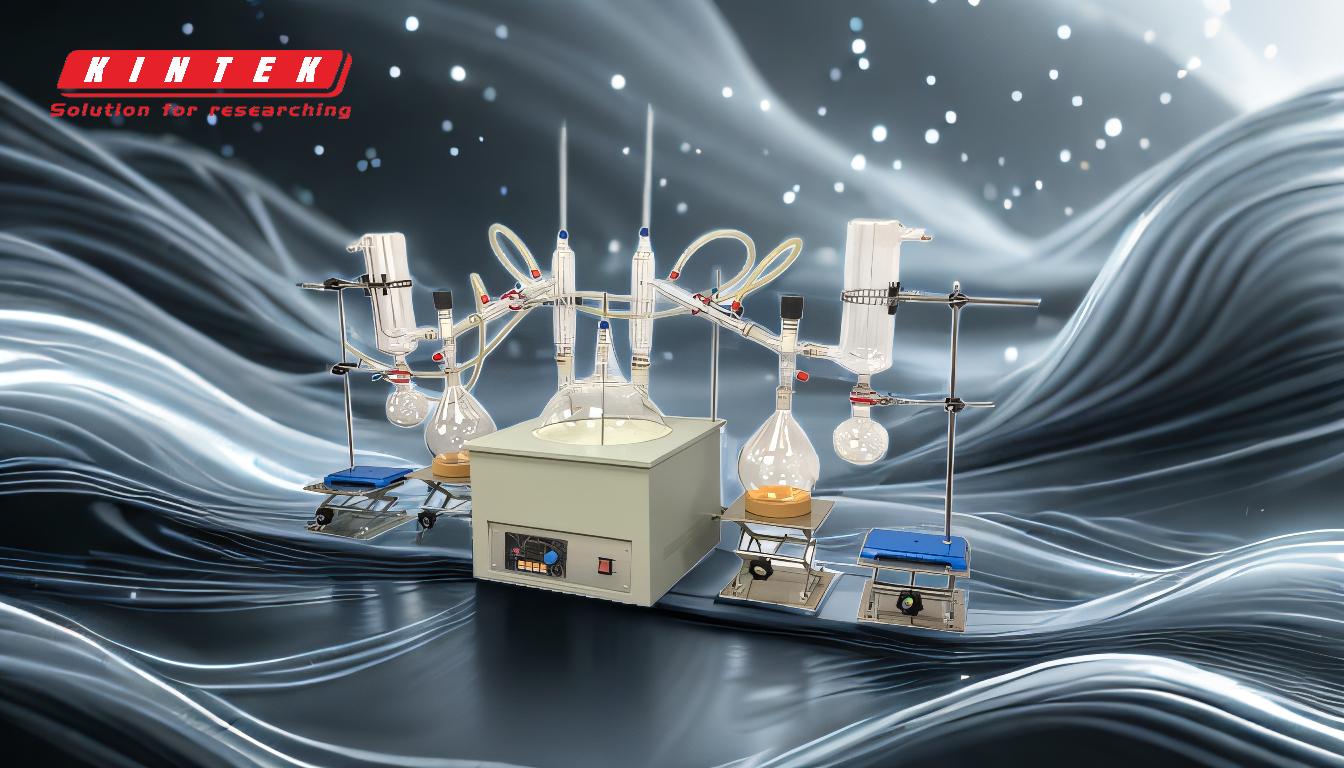Simple distillation and fractional distillation are both techniques used to separate components of a mixture based on their boiling points. However, they differ significantly in terms of their complexity, efficiency, and applications. The primary distinction lies in the use of a fractionating column in fractional distillation, which allows for the separation of liquids with similar boiling points. Additionally, fractional distillation is more effective for complex mixtures and is commonly used in industrial applications, while simple distillation is suitable for simpler separations. Below, the key differences are explained in detail.
Key Points Explained:

-
Presence of a Fractionating Column:
- Simple Distillation: This method does not use a fractionating column. It involves heating a mixture to create vapor, which is then condensed back into a liquid. The process relies on the difference in boiling points of the components, but it is limited to separating liquids with significantly different boiling points (e.g., water and salt).
- Fractional Distillation: This method incorporates a fractionating column, which is a key component that distinguishes it from simple distillation. The column provides multiple stages of vapor-liquid contact, allowing for more precise separation of components with similar boiling points (e.g., water and ethanol). The fractionating column enhances the purity of the separated components by enabling repeated condensation and vaporization cycles.
-
Efficiency and Applications:
- Simple Distillation: This technique is less efficient for separating components with close boiling points. It is typically used for simpler separations, such as purifying water or separating a solvent from a solution. It is cost-effective and straightforward but lacks the precision needed for complex mixtures.
- Fractional Distillation: This method is more efficient and effective for separating complex mixtures, especially those with components that have similar boiling points (within 25°C or 77°F at 1 atmosphere pressure). It is widely used in industrial applications, such as petroleum refining (e.g., gasoline purification) and alcohol production. While it is more expensive due to the complexity of the equipment, its ability to achieve high-purity separations makes it indispensable in many industries.
In summary, the two main differences between simple and fractional distillation are the presence of a fractionating column in fractional distillation, which enables the separation of liquids with similar boiling points, and the greater efficiency and broader industrial applications of fractional distillation compared to the simpler and more limited uses of simple distillation.
Summary Table:
| Aspect | Simple Distillation | Fractional Distillation |
|---|---|---|
| Fractionating Column | Not used | Used for multiple vapor-liquid contact stages, enabling precise separation of components |
| Efficiency | Less efficient for components with close boiling points | Highly efficient for separating components with similar boiling points |
| Applications | Suitable for simpler separations (e.g., water purification) | Ideal for complex mixtures (e.g., petroleum refining, alcohol production) |
| Cost | Cost-effective and straightforward | More expensive due to complex equipment |
Need help choosing the right distillation method for your needs? Contact our experts today!










